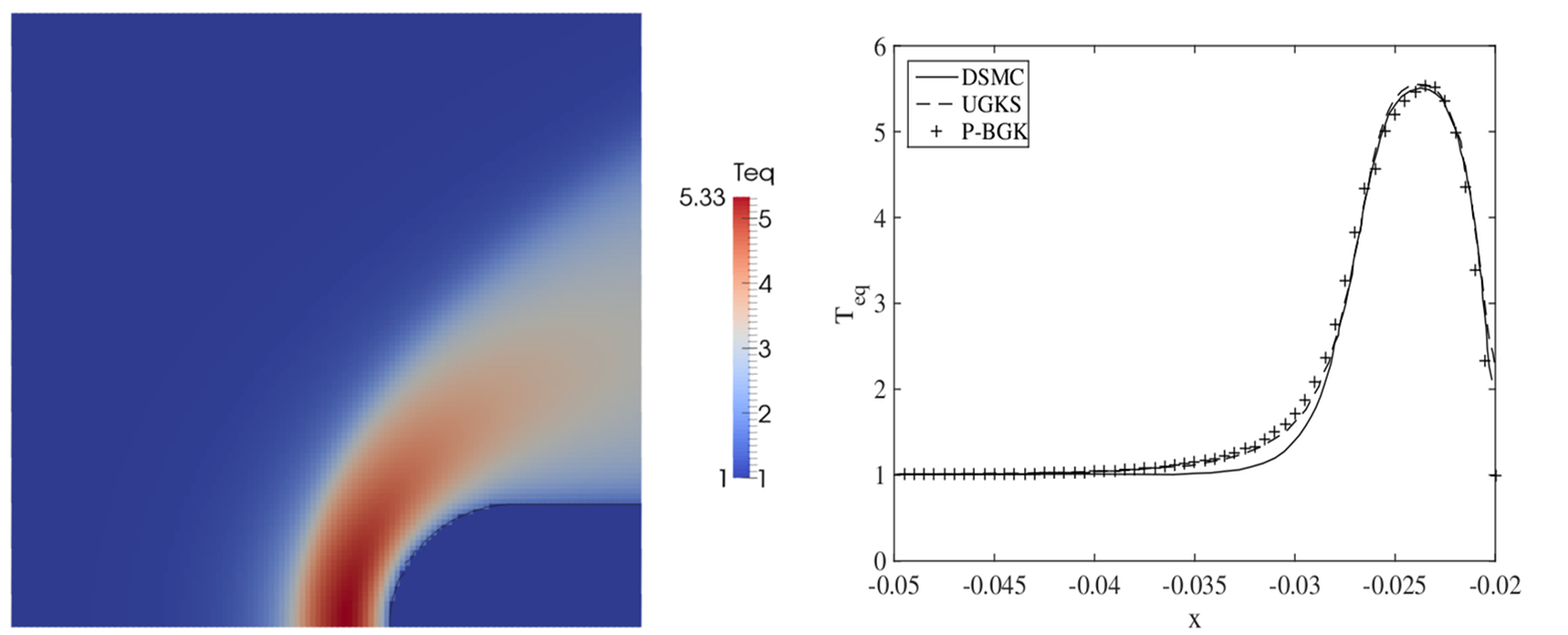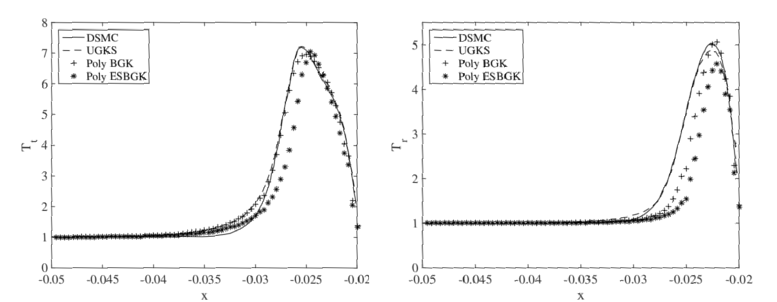Complex rarefied flows
Classical models for rarefied flows are designed for monoatomic gases and single species (BGK, ES-BGK, Shakov, etc…). However, real gas flows often deal with at least diatomic gases but also different species. In order to face complex problems such as atmospheric reentries, when to vehicle could be guided by thrusters, a difference has to be made between the surrounding gas and the gas coming from the thrusters. Thus, we designed and implemented new models to deal with such complex rarefied flows.
Polyatomic rarefied flows
Based on the BGK model, we modify the collision operator to consider additional energy degrees of freedom. Moreover, we consider different temperatures for the different kind of degrees of freedom (translational, rotational, vibrational, etc…). Thus we are able to deal with non equilibrium polyatomic gases. The designed model preserve all the properties of the Boltzmann equation such as positivity and H-theorem. Chu model reduction can be applied to reduce the velocity space dimension to the physical space dimension and save computational time. Results obtain with our model have been compared to the literature and proved to be accurate for different values of heat ratio.

Shock at M=3 on a Blunt Body. Equilibrium temperature field (left) and equilibrium temperature profile along the stagnation line (right).

Shock at M=3 on a Blunt Body. Translational temperature profile (left) and rotational temperature profile (right) on the stagnation line.
Multispecies rarefied flows
Following the idea of Klingenberg et al. [1] a multi species model based on a BGK type operator has been implemented.
[1] Klingenberg C., Pirner M. and Puppo G., “A Consistent Kinetic Model for a Two-Component Mixture with an Application To Plasma”. Kinet. Relat. Models 10 (2), 445-465




